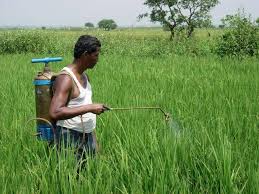The practice by which weeds are killed with herbicides is called chemical weed control and the chemicals that are used for killing or adversely affecting plant growth are known as herbicides.
Criteria used to classify herbicides include the following;
The time when they are normally applied.
Whether they are selective or not.
Whether they normally act through the shoot or the root.
1. Classification of Herbicides Based On Time of Application
There are generally three distinct times when herbicide may be applied.
1a. Pre-planting application
This application that is done before the crop is planted. A preplant herbicide may be applied broadcast on the foliage to kill fallow vegetation such as paraquat or it may be the type, such as trifluralin, that is incorporated into the soil during tillage operations.
1b. Apre-emergence herbicide application
Is the application that is done after planting but before the crop emerged. The weeds may or may not have emerged by the time of pre- emergence application.
If the weeds have not emerged, then a herbicide such as diuron or ametryne that acts on un-emerged seedlings can be used. If the weeds have emerged already, a herbicide that can kill the established weeds could be used.
1c. Apost-emergence herbicide application
Is the application of herbicide that is done after the crop has emerged. Again weeds may or may not have emerged at the time of herbicide application. Example of post emergence herbicides are 2,4-D propanil, paraquat, etc.
A post emergence herbicide must find a way to avoid herbicide damage to the emerged crop.
Read Also : Proper Weed Management and Principles of Weed Control
2. Classification of herbicide based on type of plants killed
All herbicides kill plants either selectively or non-selectively:
Non-selective herbicides are those herbicides that exert toxic effects on all plants that may come in contact with them. Examples include diquat, glyphosate, paraquat and sodium chlorate.

Selective herbicides are those that will preferentially kill certain plants species at recommended rates but will not harm other plants that they come in contact with. Example, 2,4-D, diclofop- methyl, fluometuron and metolachor.
3. Classification of herbicides based on movement in plants
3a. Contact herbicides
These are herbicides that kill the tissues they touch. Contact herbicides commonly in used in the tropics include the following: paraquat, propanil, oryzalin and diquat.
3b. Systemic herbicides
These are those herbicides that are transported in the xylem or phloem vessels of the treated plants.
Examples of systemic herbicides are atrazine, dalapon and glyphosate. Systemic herbicides are particularly useful in controlling perennial weeds because underground perennating organs and roots are killed in addition to the shoot.
3c. Soil-acting herbicides
They are those which act primarily in the soil, they are usually applied to the soil where they retard or inhibit the germination of weed seeds.
Such herbicides usually have long residual action so that they can prevent the growth of weeds for a substantial part of the cropping season.
Read Also : 10 Health Benefits of Scent Leaves (Ocimum gratissimum)
